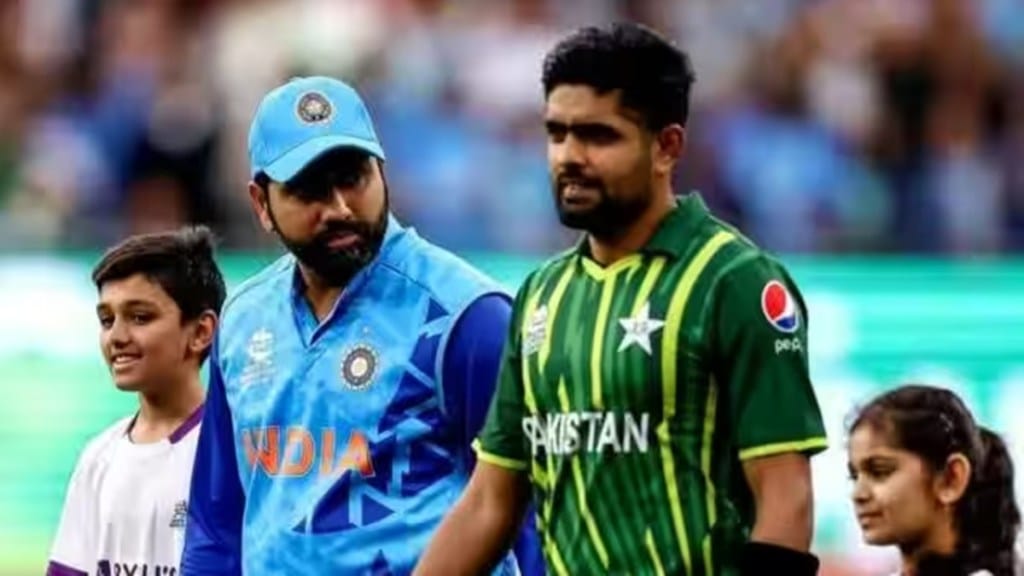By N Chandra Mohan
It is only the rains that can dampen the excitement of an India-Pakistan cricket match on Sunday in the ongoing Asia Cup. This is a keenly contested rivalry that is eagerly watched by millions on television in the sub-continent and in packed stadia, much like the Ashes series between England and Australia. There is an edge to this contest as the two neighbours have not been getting along for decades. All the 14 times they have faced off in the one-day international format for the Asia Cup since 1984 have been in neutral venues, like most recently at the Pallekele stadium, Colombo, and Dambulla, Bangladesh, Dubai and Sharjah. The only exceptions were two ODI matches played in Karachi in 2008.
Past performance is no guide for predicting how both teams will fare on Sunday. For the record, it is roughly even-stevens with India prevailing in 7 Asia Cup ODI encounters and Pakistan in 5, with no results in 2 matches, in 1997 and September 2, 2023. But if the performance of Pakistan in the rain-abandoned match at Pallekele is any indication, India has a fight on its hands. For the first time, the entire team was dismissed by the trio of Pakistani pacers, Shaheen Shah Afridi, Haris Rauf and Naseem Shah. Afridi, for his part, took out four of India’s leading batsmen, but his late inswinger that castled India’s captain was a true beauty to behold as the experienced star batsman was beaten by sheer pace.
The upshot is that if India is to make a match of it on Sunday, the much-storied top order must fire to make it an even contest between bat and ball. Both the teams appear to have similar problems in terms of their dependence on the top order, a shaky middle order and a world-class bowling line-up. Pakistan’s advantage is in its trio of pacers. Normally, they hunt in pairs like Wasim Akram and Waqar Younis did in yesteryear or lone operatives like Shoaib Akhtar not-so-long-ago and Imran Khan in the 1980s. But having three of them in one team to terrorise the batsmen with their blistering pace surely brings back memories of the fiery West Indian bowlers under Clive Lloyd.
India’s major weapon to counter Pakistan’s firepower is Jasprit Bumrah who is returning to cricket after a relatively long recuperation from injury. He is world class. If he regains even a bit of his form of couple of years ago, he can single-handedly win the forthcoming match for India. Bumrah then destroyed the English team under Joe Root at the Oval with his devastating early afternoon burst of reverse swing which led The Guardian’s cricket writer to rapturise Bumrah’s performance that day when “cricket’s master of disguise took on at least half a dozen guises: talisman, calm head, tail-end intimidator, new-ball craftsman, reverse-swing guru, yorker-summoning necromancer.”
Ahead of Sunday’ match in Colombo, India is naturally taking no chances against Afridi by practising hard at the indoor nets with the team’s throwdown specialist. But it is ominous that its top order batting legends, Virat Kohli and Rohit Sharma, opted out of this optional training. They are the ones that India is depending on most to take the fight to Pakistan. But taking on Afridi is one part of the problem. What do you do against the thunderbolts delivered by Rauf who clocked his fastest delivery ever at 159 kmph? Or Shah who is always among the wickets in most of Pakistan’s matches? While India made heavy weather in defeating Nepal, Pakistan has the momentum in this Asia Cup after thrashing Nepal and Bangladesh. Like against India, its pacers again took nine wickets against Bangladesh with Rauf leading the charge. But given the glorious uncertainties in cricket, there is no telling which team will prevail. It all depends on the form of players on Sunday. All of which makes for edge-of-the seat stuff if the rains don’t play spoilsport.
The writer is Economics and business commentator based in New Delhi
Views are personal

